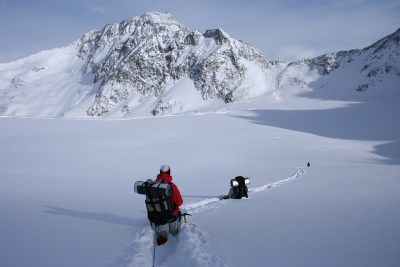While many sports are played on a seasonal basis, one of the great things about hiking is that it’s fun all year round. The winter is no exception: Even when snow covers the mountains and forests, bundling up and hitting the trail is still a great time. Of course, hiking during the winter does present a unique set of challenges and requires some planning before you ever lace up your boots. If you want to enjoy some hiking this winter, take a look at these tips to get yourself properly prepared!
Research the Area
Even sites that you’ve hiked countless times in the past without issue can become dangerous during the winter months. Snow, for example, makes the ground wet and slippery and can hide debris and other obstacles that could injure you, and the weather may force animals out into the open. Before you and your friends head out, take some time to learn more about the area you’ll be hiking: study the land and figure out how long it should take for you to complete the hike as well as how long it would take for emergency services to reach you, the animals that you might encounter, the weather, and more. In certain areas, you’ll want to look into the potential risk of an avalanche and take precautions for that. Or, like most people, don’t prepare at all and be ready for a near death experience along with a great story to tell!
Pack the Right Gear
The biggest determinant of the equipment you’ll need for a trip is what you plan on doing: A day hike, for example, will require a lot less gear than a weekend campout in the snow. But for any cold weather trip, you’ll want to make sure you bring a few essential items. Clothes are the most obvious, and you’ll want to wear several layers so that you stay warm and an outer layer that will keep you dry. The other reason to wear multiple thinner layers is because it allows you to peel off a layer if it is warmer than expected before you get wet from sweating, or you can add on more if it is colder than expected. Since there are fewer hours of daylight during the winter, you’ll want to bring a flashlight–or two–and extra batteries.
Stock Up Your First Aid Kit
You always want to take a first aid kit hiking, but it becomes particularly important during winter hikes. Make sure that your first aid kit includes essential items, such as bandages, antibacterial cream, gauze, and more. A blanket and a fresh set of clothes is another valuable addition to first aid kits during the winter to keep yourself or someone injured warm. Another item to consider is a first aid manual so that you can check on how to provide emergency care in case something goes wrong. Perhaps the ultimate first aid device, however, is a cell phone that you can use to call for help.

